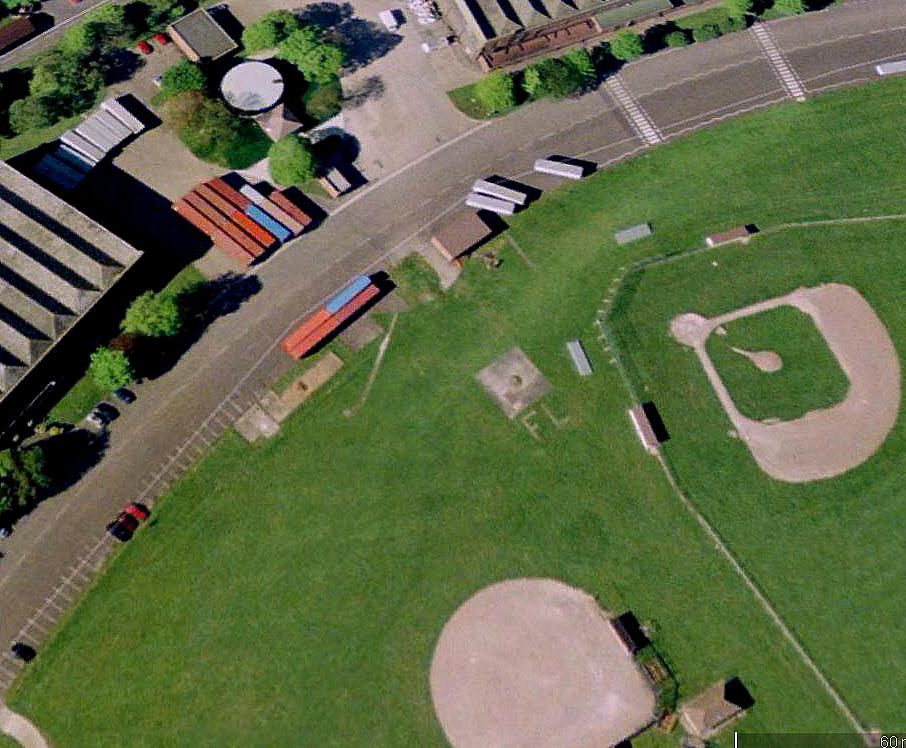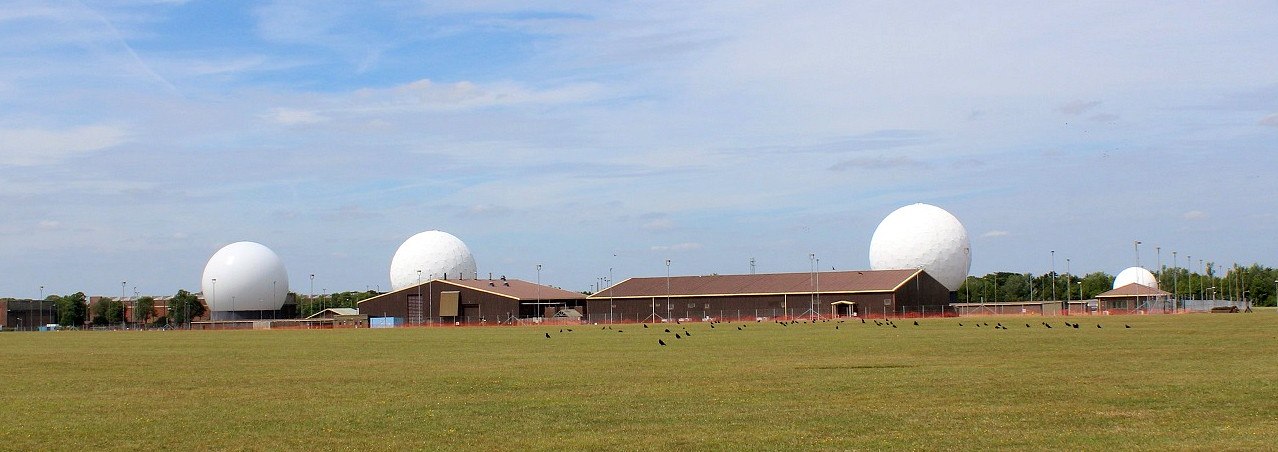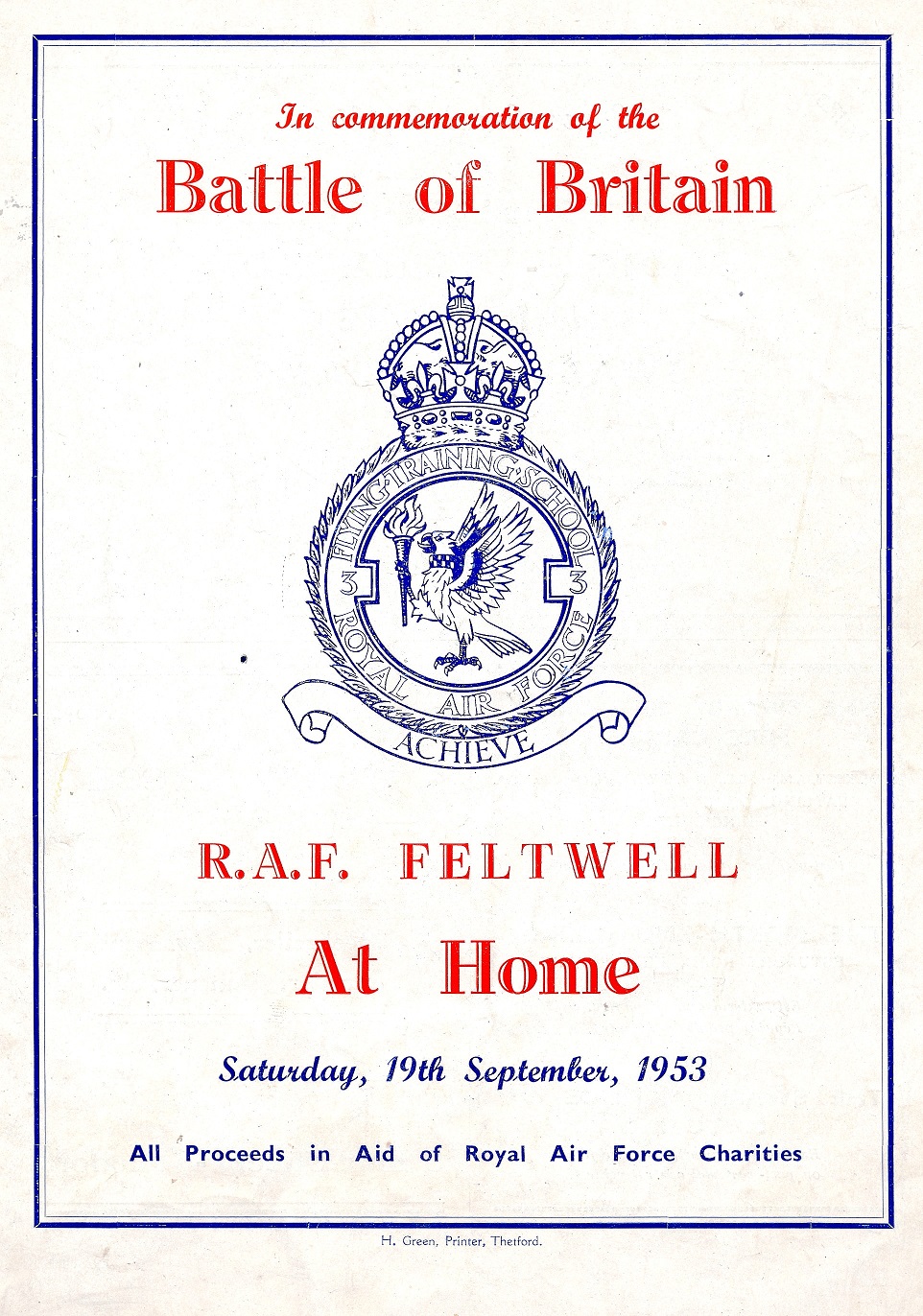Feltwell
FELTWELL: Military aerodrome
One thing to note is that the WW2 aerodrome outline is still clearly visible, and includes the golf course. The other aspect is that nothing of note seems to have changed between the 1999 and 2018 pictures. If I am correct, this is most unusual.
Notes: All pictures taken by the author in June 2015. The first picture is of a Station sign/memorial on the north side of the airfield.The second picture is of the pub sign for ' The Wellington' in Feltwell village. Well worth a visit as it is nigh on a museum celebrating this bomber station.
Military users: WW1: RFC/RAF No.7 Training Depot Station and School
(Avro 504, BE.2c, DH.4, DH.9, SE.5 and Sopwith Pup types)
Between the wars:
1919 to 1920 (?) Northern Area and Midland Area Flying Instructors School (Avro 504s?)
1937: 37 & 214 Sqdns (Handley Page Harrows, Vickers Wellingtons)
WW2: RAF Bomber Command 3 Group
75 New Zealand Sqdn * (Wellingtons)
57 & 214 Sqdns (Wellingtons)
487 RNZAF & 464 RAAF Sqdns (Lockheed Venturas)
3 LFS – Lancaster Finishing School (Surprise, surprise….Avro Lancasters)
192 Sqdn (Vickers Wellingtons, DH Mosquitos & Handley Page Halifaxs) **
BDU (Bomber Development Unit) First visit about April to September 1943 (Manchesters, Halifaxs, Lancasters and later Mosquitos). Moved to NEWMARKET. The BDU returned in February 1945 (Equipped with Fortress III, Halifax III, Lancaster III, Lincoln I, Warwick I types, and an Auster AOP Mk.V, or so it seems), and moved to MARHAM in January 1946
1519 BAT Flt (Oxfords)
1473 RCM (Wellingtons)
1688 Bomber Defence Training Flight (Hurricanes & Spitfires) – to WYTON in March 1946
20 Glider Maintenance Section (Horsas)
Post WW2: 1946 Flying Training Command
3FTS (2 x Ansons, about 50 Harvards & 20 Tiger Moths plus a Magister, later 60 Prentices and later still, Provosts).
The RAF closed their operation down in April 1958. Coinciding with the RAF the Army Air Corps, 651 Sqdn had Auster AOP-6s and possibly two Chipmunks based here during 1956 -58
Note:
From 1958 till 1961 this Station was also used by the USAF, but – it appears (?), never used for operational flying
Also in 1958 this RAF Station became the first Thor ICBM base – 77 Sqdn and became the Thor training base for 82 Sqdn SHEPHERDS GROVE, 107 Sqdn TUDDENHAM, 113 Sqdn MEPAL and 220 Sqdn NORTH PICKENHAM.
This phase of complete and utter stupidity, (in large part led by manic ‘scientists’ intent on destroying the world four times over etc, etc with nuclear missiles), lasted until 1963 at FELTWELL. In October 1963 sanity was restored to some degree and the OCTU moved in from JURBY [ISLE OF MAN}. (Avro Ansons, Percival Devons & Pembrokes), this phase ending in 1966.
The USAF took over the Station from 1967, (And although a RAF unit was present, 204 Signals Unit), it does appear that no more flying activity took place?
Location: S of Feltwell, 5nm WNW of Brandon, probably in/near the Hockwold Fens area
Period of operation: 1917 to 1920 then 1937 to 1985 and beyond this period to ?
Site area: WW1: 208 acres 1006 x 731
Runways: WW2: E/W 1646 grass NE/SW 1280 grass
NW/SE 1097 grass
NOTES: It is of course possible that the WW1 and WW2 airfields didn’t share exactly the same site.
* 75 Sqdn is credited as being the first Commonwealth RAF Squadron to form in WW2.
AN IMPOSSIBLE MISSION
On the 18th December 1939, No.37 Squadron were part of an operation to bomb German navy ships in Wilhelmshaven. Twenty-four Wellingtons were involved; nine from 149 Squadron at MILDENHALL, nine from No.9 Squadron at HONINGTON and the remaining six from No.37 Squadron at FELTWELL. No fighter cover was provided because the RAF did not possess a fighter with this range, and, Bomber Command did not consider them neccessary - a close formation of bombers being well able to defend themselves.
As the formation crossed the North Sea the broken cloud cover faded away and the flew on in by then crystal clear conditions, making landfall near the Danish border and turning south to follow the coast to Wilhelmshaven. It is very likely that the aircrews had no idea the Germans possessed radar, and anyway, when the radar stations reported the formation the Luftwaffe refused to believe their reports. On the basis that nobody, not even the RAF, would be stupid enough to mount an attack in such weather. It would be suicidal.
Previous experience had taught the RAF planners that German flak was both fierce and effective, so the bombing altitude was 15,000 feet. At which altitude the RAF crews were suffering from the intense cold and the hydraulic oil to power the gun turrets was thickening up - making their operation sluggish. Also, from this altitude no target as small as a warship had ever been hit - in fact the RAF bombers probably couldn't hit a small town inflicting much damage.
As the formation reached Wilhelmshaven the flak was phenomenal, which kept the then airborne Luftwaffe fighters at bay. Although flying above the flak, the turbulence created caused the formation to seperate. Plus the basic bomb-aiming sight the RAF used depended on a long straight approach - impossible in such conditions. And, the crews had been expressly forbidden to drop their bombs if the slightest risk to civilians existed.
Wing-Commander Richard Kellett, leading the formation, had no option but to turn the formation around and head back. The Luftwaffe fighters, Me109s and Me110s, then had every advantage with the mostly spread out formation. And they took it. Two of the Wellingtons had already turned back over the North Sea and only ten battered Wellingtons made it back. Only one from No.37 Squadron. In fairness the Luftwaffe didn't do that well, they really should have shot down more Wellingtons, but they didn't have, at that time, the co-ordinated radar control system, the RAF had during the 'Battle of Britain'.
What it did prove, although it took some time for this to be fully appreciated by the RAF, was that daytime bombing of Germany was no longer an option. Nightime bombing wasn't either, as the RAF had no idea how to navigate at night. But that was the course they then pursued, with neglible results for another year or so.
I can most highly recommend reading 'Bomber Command' by Max Hastings. Not least for his account of this raid.
THE AWARD OF A VICTORIA CROSS
Returning from a raid on Munster in Germany on the night of the 7th/8th July 1941 the Wellington L7818 of 75 (NZ) Sqdn was hit by a German night fighter, severely damaging the aircraft and setting fire to the starboard engine. Now then, get a picture of a Wellington and consider this - the co-pilot Sgt.Ward climbed through the ‘astro-hatch’ and then onto the wing, succeeding in smothering the engine fire! He then clambered back into the Wellington which limped back landing at NEWMARKET. The ‘battle’ damage was so severe this aircraft was then scrapped. There was one outcome though, Sgt Ward was awarded the Victoria Cross for his courage.
** 192 Squadron were tasked with flying Wellingtons, Halifaxs and Mosquitos to identify German radar patterns and wavelengths. Equally dangerous missions, operating alongside the bombers, but essential for the counter-technology war going on to devise jamming methods.
THE BATTLE OF BRITAIN AIR SHOW
On the Battle of Britain Open Day on 19th September 1953 these aircraft types took part:
Static park: Anson, Canberra, Chipmunk, Devon, Harvard, Lincoln, Meteor, Mosquito, Prentice, Spitfire, Tiger Moth, Valetta, Varsity & Wellington
Flying display – First half:
14.30: Formation take-off and formation drill with twenty Harvards from 3FTS
15.00: Short Solent asymmetric flying demonstration
15.15: Eleven Meteors flew past
15.18: Twenty Harvards in ‘Royal Cypher –ER’ formation followed by stream landings. The first half of the display ended with six Harvards simulating a dive bombing attack
Flying display – Second half:
Flypast: Three Lincolns and two Spitfires. Followed by a formation of Wellingtons.
16.40: Royal Navy – flypasts by a Sea Fury, Sea Hornet and Firefly.
Formation flying by six Prentices of 3 FTS with a stream landing
Final display: Canberra
Programme close: Pyrotechnic display
It’s sad, isn’t it? That even FARNBOROUGH today is hard pushed to offer something similar?
MEMORABILIA and PICTURES
In May 2022 Mr Allen Ambridge kindly provided these items.
NOTES: The first programme cover was for the 'Battle of Britain' display on the 19th September 1953. The second picture is of the memorial to 75 (New Zealand) Squadron based here flying Vickers Wellington bombers. The third item is the programme cover for the 'Battle of Britain' display on the 15th September 1956.
It has to be said, that in recent years, anybody coming along to take snaps around the few remaining USAF bases in the UK are not welcome. Hardly surprising perhaps seeing that, despite their apparent military supremacy, they have totally lost their last two major wars. In Iraq and Afghanistan, a trend of defeat first established in Vietnam.
AM I MISTAKEN?
I am trying hard to remember if any other RAF grass airfield can claim a similar history?
We'd love to hear from you, so please scroll down to leave a comment!
Leave a comment ...
Copyright (c) UK Airfield Guide



























